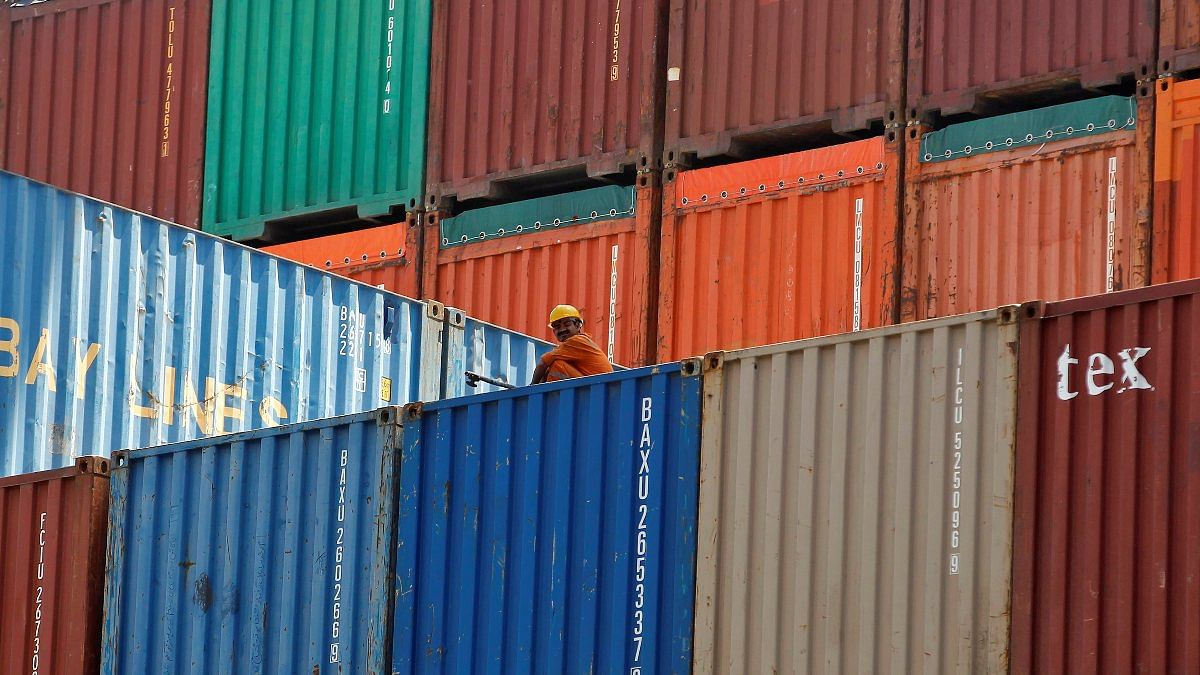New Delhi: India’s trade deficit hit a record monthly high of $31.46 billion in October, owing to a surge in imports like gold during the festive season.
India’s largest share of imports continued to come from China, followed by Russia, which has moved up several ranks this fiscal due to large imports of petroleum and oil products into India.
That said, Chinese imports are double that of Russia’s. Goods imported from China stood at $60 billion for April-October 2023 compared to Russian imports that stood at $36 billion for the same period.
According to data released by the Indian commerce ministry Wednesday, Indian imports in October stood at $65.03 billion while exports were $33.57 billion. These are higher than the import and export figures registered in October 2022, which were $57.91 billion and $31.60 billion, respectively.
Of all imported commodities, gold has exhibited the highest growth. This is on account of Diwali and the festive season, said Satya Srinivas, Additional Secretary at the ministry of commerce and industry.
The increase in the trade deficit was largely due to a 95.4 percent surge in gold imports month-on-month. In September, gold imports stood at $4.1 billion, which increased to $7.23 billion this month.
Imports of gold have also jumped from April-October year-on-year.
According to data from the commerce ministry, gold imports have increased from $23.97 billion in the five-month period last year to $29.48 billion in the corresponding period this year.
Commerce Secretary Sunil Barthwal said China continues to be India’s top source of imports, followed by Russia, UAE, US, and Saudi Arabia. Russia has climbed two ranks since April, when it was India’s fourth-largest import partner.
Low supply of Russian diamonds
On the other hand, exports have seen a decline from April-October year-on-year.
For example, that of gems and jewellery — traditionally a top commodity in India’s export basket — has fallen from $23.95 billion in April-October 2022 to $18.61 billion this year.
Srinivas told the media Wednesday this was due to low demand for gems and jewellery in markets like China and the US.
Industry leaders say the geopolitical turmoil in the world has also played a role.
“The low demand in markets like the US is due to high interest rates and inflation brought on by conflicts in Ukraine and Gaza. Supply is also drying up. Russian rough diamonds, which constitute one third of the global supply, have almost vanished from the market,” said Colin Shah, Founder and Managing Director of Kama Jewelry and former chairman of the Gem & Jewellery Export Promotion Council (GJEPC).
He told ThePrint that Indian gems and jewellery exporters may have to start focusing more on jewellery to increase exports. “If the Special Economic Zones (SEZ) Act is amended during the winter session in Parliament, it will be a good booster for us in FY24,” he added.
A new SEZ regime would benefit the gems and jewellery sector since exports from these zones are growing at a rapid pace and can attract further foreign direct investment in manufacturing.
Apart from gems and jewellery, other goods that have seen a decline in exports are petroleum products and organic and inorganic chemicals. Commerce ministry officials said the volume of petroleum and oil imports continue to be high but have been affected by changes in global oil prices.
(Edited by Tikli Basu)
Also read: Merchandise trade deficit in June in line with expectations at $20.13 bn, shows govt data


